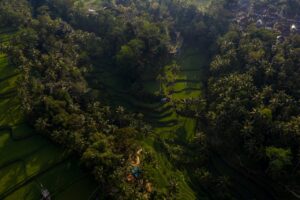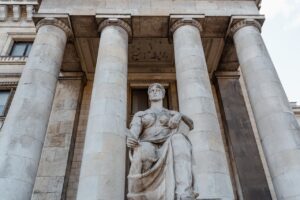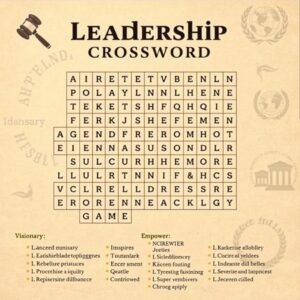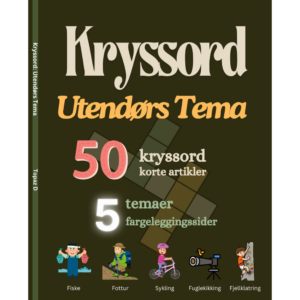
Explore & Play
Discover interesting topics and solve the accompanying crossword puzzle.
Burden Crossword | Norway’s Economic Challenges
Table of Contents
Start your journey by tackling the Burden crossword, a fun way to engage with the topic. If you’re not yet familiar with the subject, feel free to read the article first for a deeper understanding, then return to the crossword for an interactive experience. Enjoy exploring Norway’s economic challenges!
Burden Crossword
You can either fill in the crossword puzzle directly on this page or click the button in the bottom right corner to print it for free.
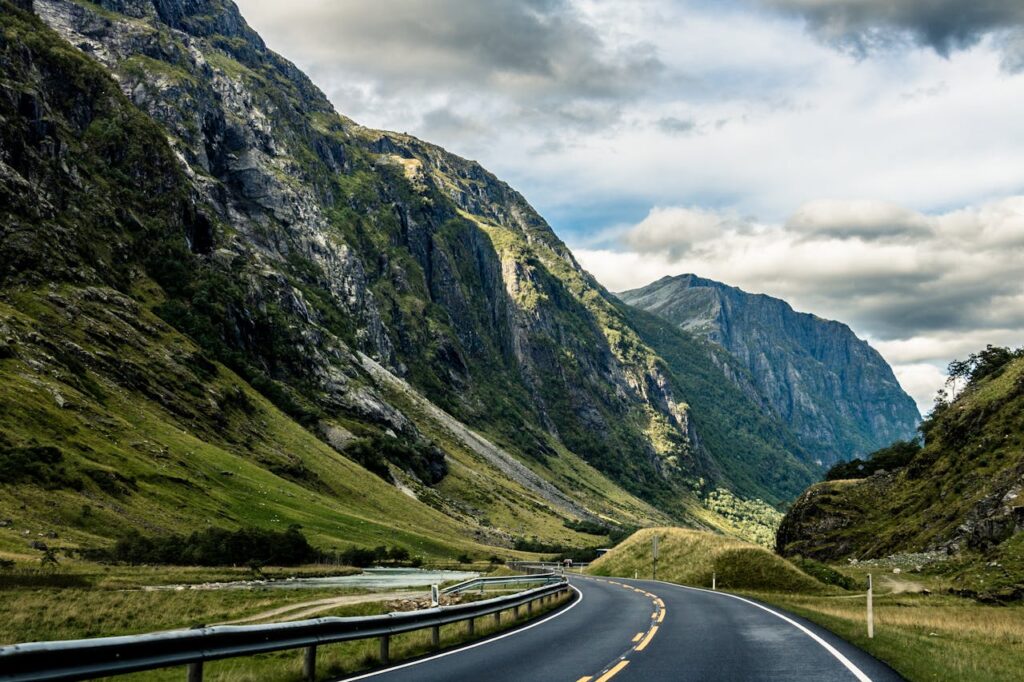
Navigating Norway’s Economic Challenges
Living in Norway offers a unique blend of stunning landscapes, a high quality of life, and modern social systems, but navigating the country’s economic challenges is no small feat. From taxes and cost of living to environmental regulations and remote area difficulties, Norway presents a variety of burdens that impact its residents daily. This guide explores these challenges, helping both citizens and expats understand the country’s economic landscape. And for a fun twist, you can engage with our Burden crossword puzzle, designed to test your knowledge on these topics interactively!
1. The Financial Landscape in Norway
The Role of Taxes in Norway’s Economy
Norway’s economic structure is built on a comprehensive taxation system designed to fund a robust welfare state and maintain public services. Taxes in Norway can be categorized into various types, including income tax, wealth tax, and Value-Added Tax (VAT).
Income Tax: The income tax system in Norway is progressive, meaning that individuals with higher incomes pay a larger percentage of their income in taxes. This structure aims to reduce income inequality and support public services. The marginal tax rates can reach up to 47.8% for the highest earners, which significantly contributes to the country’s revenue. While this system promotes equality, it also places a considerable burden on high-income earners who may feel disincentivized to earn more due to the high tax rates.
Wealth Tax: In addition to income tax, Norway imposes a wealth tax on individuals with net assets exceeding a certain threshold. This tax is designed to target the wealthiest individuals, further redistributing wealth and financing social services. However, this can deter investment and lead to potential capital flight, as high-net-worth individuals may seek to relocate to lower-tax jurisdictions.
Value-Added Tax (VAT): The standard VAT rate in Norway is one of the highest in the world, currently set at 25%. This tax is applied to most goods and services, contributing significantly to the national budget. While the revenue generated supports essential public services like healthcare and education, it also raises the cost of living for residents. Additionally, certain goods like food and transportation are subject to reduced VAT rates, reflecting the government’s attempt to balance revenue generation with affordability for its citizens.
Understanding Norway’s taxation system is crucial for residents and newcomers alike, as it shapes the financial landscape in which they live. While high taxes fund a comprehensive welfare state, they also create financial pressures that residents must navigate daily.
The Rising Cost of Living
In recent years, Norway has consistently ranked among the most expensive countries globally, a fact that both locals and expatriates grapple with regularly. The high cost of living stems from various factors, including high wages, taxes, and limited land availability, especially in urban areas.
Housing Costs: One of the most significant contributors to the cost of living is housing. The demand for real estate in cities like Oslo has driven property prices to new heights. Renters often find themselves paying a substantial portion of their income on housing, leaving little for other necessities. The government’s efforts to control the housing market through regulations and subsidies have had limited success, leading to ongoing affordability concerns.
Groceries and Essentials: Grocery prices in Norway are notoriously high compared to other countries. This can be attributed to various factors, including import taxes, high wages for workers, and the geographical challenges of distributing goods across a vast and rugged landscape. Residents often spend more on basic food items than their counterparts in other European nations, which adds to the financial strain on households.
Childcare and Education: Although Norway offers substantial public services, the costs associated with childcare can be significant, especially for families with multiple children. While government subsidies help, many parents still face high out-of-pocket expenses. Furthermore, although education is free at public institutions, there can be additional costs related to school supplies, extracurricular activities, and transportation, further stretching family budgets.
In summary, while Norway’s financial landscape is designed to support its citizens, the high cost of living presents challenges that residents must navigate carefully. Balancing the benefits of a strong welfare system with the realities of day-to-day expenses is an ongoing struggle for many.
2. Environmental and Infrastructure Challenges
Balancing Emission Targets with Economic Growth
As a nation committed to environmental sustainability, Norway has established ambitious emission reduction targets to combat climate change. However, achieving these goals often comes with economic implications.
Industry Adaptation: Many industries, especially those reliant on fossil fuels like oil and gas, are under pressure to reduce their carbon footprints. Transitioning to greener practices requires significant investment in new technologies and infrastructure. For instance, the shipping industry, a crucial part of Norway’s economy, faces stringent regulations to minimize emissions, compelling companies to invest in cleaner vessels and alternative fuels. While these changes are essential for long-term sustainability, they also create immediate financial burdens for businesses that must balance compliance with profitability.
Renewable Energy Investments: Norway is a leader in renewable energy, particularly hydropower, which accounts for a significant portion of its electricity generation. However, expanding renewable energy infrastructure comes with costs. The government invests heavily in research and development to enhance energy efficiency and promote the use of renewables. This financial commitment can lead to higher taxes or a reallocation of funds from other public services, impacting residents’ wallets.
Public Awareness and Support: Engaging the public in environmental initiatives is crucial for success. However, there can be resistance to changes that affect personal habits or lifestyles, such as increased fees for waste disposal or incentives to use public transport. The government often faces the challenge of balancing public support for environmental initiatives with the economic realities of implementing such measures.
Infrastructure and Maintenance Costs
Maintaining and upgrading Norway’s infrastructure is an ongoing challenge, given the country’s unique geographical characteristics.
Geographical Challenges: Norway’s rugged terrain and scattered population mean that providing consistent infrastructure services is more complex and expensive than in many other countries. Building and maintaining roads, bridges, and tunnels in mountainous areas requires specialized engineering and substantial investment. This often leads to increased costs for taxpayers, who bear the financial burden of maintaining these vital connections.
Urbanization and Congestion: As cities like Oslo grow, urban infrastructure faces mounting pressure. Traffic congestion, public transport inadequacies, and the need for expanded road networks become pressing issues. The government must invest in infrastructure improvements to address these challenges, which can strain public budgets. The push for modernizing public transportation, including rail and bus systems, often involves significant expenditures that impact other areas of public spending.
Environmental Regulations: Infrastructure projects are also subject to stringent environmental regulations. Any construction must consider potential impacts on local ecosystems, requiring thorough assessments and mitigation plans. While these regulations are essential for preserving Norway’s natural beauty, they can prolong project timelines and increase costs.
In summary, while Norway’s commitment to environmental sustainability and modern infrastructure is commendable, these initiatives come with significant financial challenges. The government must navigate the delicate balance between meeting ecological goals and ensuring the economic stability of its residents.
3. Social Costs and Welfare Systems
Healthcare Pressure and Wait Times
Norway’s healthcare system is built on the principles of universal access and equity. While this system has many benefits, it also faces significant challenges.
Increased Demand for Services: As the population ages, the demand for healthcare services continues to rise. Hospitals and clinics are experiencing increased patient volumes, which can lead to longer wait times for treatments and procedures. Although the government aims to maintain high standards of care, the strain on resources often results in frustration among patients who experience delays.
Funding Challenges: Public funding for healthcare relies heavily on tax revenues. As the population grows and the need for services expands, ensuring adequate funding becomes increasingly challenging. The government must make tough decisions about allocating resources, which can impact the quality and availability of care. Balancing these competing demands is a constant struggle.
Mental Health Services: Mental health has become a growing concern in Norway, with many citizens facing challenges related to stress, anxiety, and depression. However, mental health services are often underfunded compared to physical healthcare. This imbalance creates additional burdens on the healthcare system, as individuals seeking help may encounter long wait times or inadequate support.
Pension and Social Welfare Costs
Norway’s welfare system provides significant support to its citizens, particularly the elderly and those in need. However, these benefits come with financial implications.
Aging Population: With an increasing proportion of the population entering retirement, the pressure on the pension system is mounting. The government must ensure that pension funds remain sustainable, requiring careful management of contributions and payouts. As more individuals retire, the burden on the working-age population grows, leading to potential strains on the economy.
Social Welfare Programs: Norway’s social welfare programs, including unemployment benefits and disability support, are designed to provide a safety net for those in need. While these programs are essential for maintaining social stability, they require significant funding. Balancing the demand for these services with the need for economic growth presents an ongoing challenge for policymakers.
Public Support and Funding: Public support for welfare programs is generally strong in Norway, but there is an ongoing debate about the sustainability of these systems. As the population ages and the economy changes, ensuring that welfare programs can adapt and thrive is crucial. The government must engage in discussions about the future of social services to address emerging challenges.
4. Economic Pressures in Rural and Remote Areas
Challenges of Limited Job Opportunities
In Norway, rural and remote areas face unique economic pressures that differ significantly from urban centers. The challenges in these regions stem primarily from limited job opportunities, which can lead to population decline and economic stagnation.
Dependence on Traditional Industries: Many rural communities in Norway rely heavily on traditional industries, such as agriculture, forestry, and fishing. While these sectors have deep historical roots, they often struggle to provide sufficient employment in a modern economy. Young people frequently leave these areas in search of better opportunities in urban settings, resulting in a shrinking workforce and a decline in local economies. The government has implemented various initiatives to promote job creation in these regions, but progress remains slow.
Rural Entrepreneurship: Encouraging entrepreneurship in rural areas is vital for economic growth. However, aspiring entrepreneurs often face challenges such as limited access to financing, inadequate infrastructure, and a lack of support networks. While government programs exist to foster innovation and support small businesses, many potential entrepreneurs find it difficult to navigate the complexities of starting a business in a rural context. This creates a cycle where the lack of job opportunities leads to further economic decline.
Tourism Potential: Many rural areas in Norway possess significant tourism potential, thanks to their stunning natural landscapes and cultural heritage. However, effectively harnessing this potential requires substantial investment in infrastructure and marketing. Local communities often lack the resources to develop tourism-focused businesses, which limits their ability to capitalize on this sector. Increased government support for rural tourism could help create jobs and stimulate local economies.
Infrastructure Deficiencies
Infrastructure plays a crucial role in economic development, and rural areas in Norway often suffer from inadequate facilities and services.
Transportation Limitations: Access to reliable transportation is a critical issue for residents in remote areas. Poorly maintained roads, limited public transport options, and long distances to essential services can hinder economic activity. For instance, farmers may struggle to transport their products to market, leading to financial losses. Investing in transportation infrastructure is essential to enhance connectivity and facilitate economic growth in these regions.
Access to Services: In addition to transportation, access to essential services such as healthcare and education is often limited in rural areas. Residents may have to travel significant distances to access healthcare facilities, which can be a barrier to receiving timely care. Similarly, limited educational opportunities can deter families from moving to these areas, further exacerbating the economic challenges faced by local communities.
Digital Divide: The digital divide is another significant issue affecting rural areas. Limited access to high-speed internet can hinder business operations and reduce educational opportunities. As more businesses and services move online, residents in remote areas risk being left behind. Addressing this issue requires concerted efforts from both the government and private sector to improve digital infrastructure.
In summary, the economic pressures faced by rural and remote areas in Norway are multifaceted, stemming from limited job opportunities, infrastructure deficiencies, and the need for greater support for entrepreneurship. Addressing these challenges is vital for ensuring sustainable growth and improving the quality of life for residents.
5. Cultural and Social Integration Challenges
Diversity and Inclusion in Norwegian Society
As Norway becomes increasingly multicultural, the need for effective cultural and social integration becomes paramount. While diversity enriches society, it also presents challenges that require careful management.
Integration of Immigrants: Immigrants play a vital role in Norway’s economy, filling labor shortages and contributing to cultural diversity. However, many immigrants face significant barriers to integration, including language difficulties, cultural differences, and limited access to employment opportunities. Language barriers can prevent newcomers from fully participating in society, hindering their ability to communicate, work, and build social networks. The government has implemented various integration programs, but ongoing support is essential for long-term success.
Social Cohesion: Fostering social cohesion in a diverse society is crucial for ensuring harmony among different cultural groups. Unfortunately, discrimination and prejudice can arise, leading to social tensions. The challenge lies in promoting mutual respect and understanding among diverse communities. Community organizations and local governments play a pivotal role in facilitating cultural exchange programs, workshops, and events that encourage dialogue and collaboration.
Youth Integration: Young immigrants face unique challenges in integrating into Norwegian society. They often struggle to balance their cultural heritage with the pressures of fitting into a new environment. Schools play a critical role in this process, as they serve as the first point of contact for many immigrant families. Providing support services, such as language courses and mentorship programs, can help young people navigate their dual identities and foster a sense of belonging.
Cultural Preservation vs. Adaptation
As Norway embraces cultural diversity, the challenge of preserving traditional Norwegian culture while accommodating new influences becomes increasingly complex.
Balancing Traditions: Norwegian society values its cultural heritage, with customs, traditions, and languages forming a core part of its identity. However, as more immigrants contribute their own traditions, finding a balance between preservation and adaptation becomes essential. Cultural exchange programs can help foster understanding and appreciation for both Norwegian traditions and those of immigrant communities, promoting a sense of unity rather than division.
Resistance to Change: Some segments of the population may resist cultural change, fearing that traditional values and customs will be eroded. Addressing these concerns requires open dialogue and education to dispel myths and misunderstandings about cultural diversity. Promoting the idea that cultural exchange can enhance rather than diminish Norwegian identity is vital for fostering a more inclusive society.
Cultural Contributions: Immigrant communities bring valuable perspectives and contributions to Norwegian culture. Festivals, food, and art from diverse backgrounds enrich the cultural landscape and create opportunities for collaboration. Recognizing and celebrating these contributions can help bridge cultural gaps and promote a sense of belonging among all residents.
In conclusion, navigating the challenges of cultural and social integration requires a multifaceted approach that emphasizes communication, understanding, and respect. By fostering an inclusive environment, Norway can harness the benefits of diversity while addressing potential tensions.
6. Costs Associated with Everyday Life
Housing and Living Expenses
The high cost of living in Norway affects all residents, but it can be particularly burdensome for those on fixed incomes or lower wages.
Housing Affordability: Housing costs in urban areas like Oslo have skyrocketed, making homeownership increasingly unattainable for many. Rent prices often consume a large portion of residents’ incomes, leaving little for other essentials. The government has attempted to implement measures to increase the availability of affordable housing, but demand continues to outstrip supply. For many, this financial pressure can lead to stress and anxiety, highlighting the need for comprehensive housing policies.
Everyday Necessities: The cost of everyday necessities, including groceries, transportation, and healthcare, adds to the financial burden. While Norway boasts a high standard of living, the prices of goods and services can be prohibitively expensive. Families often find themselves budgeting carefully to make ends meet, leading to compromises on quality of life. Addressing these costs is essential for ensuring that all residents can enjoy a comfortable standard of living.
Transportation Costs
Transportation is another significant expense for many Norwegians, particularly those living in urban areas where public transport is essential.
Public Transportation: While public transportation systems in Norway are generally efficient, ticket prices can be steep, especially for those who commute daily. High fares can discourage residents from using public transport, leading to increased reliance on cars, which contributes to congestion and environmental concerns. The government must find a balance between maintaining service quality and affordability for residents.
Fuel Prices: For those who rely on personal vehicles, rising fuel prices can pose a significant financial burden. As global oil prices fluctuate, Norwegian consumers often feel the impact at the pump. While Norway encourages the use of electric vehicles to reduce emissions, the initial costs of purchasing these vehicles can be prohibitive for many.
Health and Childcare Costs
Healthcare and childcare costs are essential factors contributing to the overall cost of living.
Healthcare Access: Although Norway offers a universal healthcare system, there can still be out-of-pocket expenses related to prescriptions and specialized treatments. Residents may encounter long wait times for certain procedures, leading to additional stress and uncertainty. Ensuring that healthcare remains accessible and affordable for all citizens is crucial for maintaining overall well-being.
Childcare Expenses: Childcare can be one of the most significant expenses for families, particularly for those with multiple children. While the government provides subsidies to reduce costs, many parents still find themselves struggling to afford quality care. The high costs associated with childcare can deter parents from re-entering the workforce or pursuing further education, impacting family financial stability.
7. Seasonal and Environmental Challenges
Seasonal Variations and Their Impact
Norway’s geographical location and diverse climate lead to significant seasonal variations, which profoundly affect various sectors of the economy. These seasonal challenges can create a unique set of burdens for businesses and communities alike.
Tourism Fluctuations: The tourism industry in Norway is heavily reliant on seasonal changes. During the summer months, the stunning fjords, midnight sun, and outdoor activities attract tourists from around the globe. However, the winter season, with its harsh weather and limited daylight, often sees a decline in tourist numbers, impacting businesses dependent on seasonal visitors. To mitigate these fluctuations, the tourism sector is increasingly focusing on promoting year-round activities, such as winter sports, Northern Lights viewing, and cultural festivals. However, creating a balanced, sustainable tourism model remains a challenge.
Agricultural Cycles: The agricultural sector is profoundly affected by Norway’s short growing season. Farmers must carefully plan their planting and harvesting schedules to maximize crop yields. The unpredictability of weather conditions, including late frosts or heavy rainfall, can jeopardize harvests and create financial instability for farmers. The government has introduced various support measures, such as crop insurance and subsidies, to help mitigate these risks. However, farmers must remain adaptable and resilient to survive in such a dynamic environment.
Fishing Seasons: Similar to agriculture, the fishing industry in Norway operates on seasonal cycles. Different species of fish are available at various times of the year, and fishermen must adhere to strict quotas and regulations to ensure sustainable practices. However, climate change is altering fish migration patterns, making it increasingly challenging for fishermen to anticipate their catches. Sustainable fishing practices are essential to maintain fish populations, but they can impose additional burdens on local fishing communities that rely on traditional fishing methods.
Environmental Concerns
Environmental challenges play a crucial role in shaping Norway’s economy and quality of life. As a country known for its stunning natural landscapes, Norway faces the dual challenge of protecting its environment while promoting economic growth.
Climate Change: Climate change poses significant risks to Norway’s environment, with rising temperatures impacting ecosystems, wildlife, and natural resources. The fishing industry, for example, faces shifting fish populations due to warmer waters, affecting both livelihoods and food security. Additionally, changing precipitation patterns can lead to increased flooding and landslides, threatening infrastructure and agricultural productivity. To combat these challenges, Norway is investing in renewable energy sources, promoting sustainable practices, and working to reduce greenhouse gas emissions.
Pollution and Ecosystem Degradation: Industrial activities, shipping, and tourism can contribute to pollution and ecosystem degradation in Norway’s pristine environments. Protecting natural habitats is essential for preserving biodiversity and ensuring the sustainability of industries reliant on natural resources. The government has implemented strict environmental regulations, but ongoing monitoring and enforcement are crucial to safeguard these areas.
Adaptation Strategies: Addressing the challenges posed by environmental changes requires proactive adaptation strategies. Communities must develop resilience to mitigate the impacts of extreme weather events, such as flooding and droughts. This includes investing in infrastructure improvements, enhancing disaster preparedness, and promoting sustainable land use practices. Additionally, increasing public awareness about environmental issues can foster a culture of sustainability and encourage collective action.
In summary, seasonal and environmental challenges in Norway create unique economic burdens that require innovative solutions and collaboration across sectors. Addressing these issues is essential for ensuring the long-term sustainability of both the economy and the environment.
8. Economic Burdens in the Fishing and Agricultural Sectors
Challenges in the Fishing Industry
The fishing industry is a cornerstone of Norway’s economy, but it faces a range of economic burdens that threaten its sustainability and profitability.
Overfishing and Sustainability: While Norway has a rich history of fishing, overfishing remains a significant concern. Striking a balance between commercial interests and ecological sustainability is critical. Quotas and regulations are implemented to manage fish stocks, but they can create financial pressures for fishermen who may find their catch limits reduced. Additionally, adhering to sustainable fishing practices often requires additional investments in technology and training, which can be financially burdensome for small-scale operators.
Global Competition: The global fishing market is highly competitive, with numerous countries vying for access to marine resources. Norwegian fishermen face challenges from lower-cost producers, making it difficult to maintain profitability. This competition can lead to price pressures, affecting the income of local fishing communities. To remain competitive, Norwegian fishermen must focus on quality, sustainability, and value-added products, which may require investments in processing facilities and marketing efforts.
Climate Impact on Fisheries: Climate change is reshaping fish populations and habitats, posing a significant risk to the fishing industry. Warmer ocean temperatures can alter migration patterns, making it challenging for fishermen to locate target species. Additionally, changing water conditions can affect fish health and reproductive cycles. Fishermen must adapt to these changes, which may require new techniques, equipment, and approaches to fishing. The need for ongoing research and collaboration with scientists is essential to monitor these shifts and implement adaptive strategies.
Economic Burdens in Agriculture
The agricultural sector in Norway plays a vital role in food production and rural employment but faces its own set of economic challenges.
High Production Costs: Agriculture in Norway is characterized by high production costs due to factors such as labor, land prices, and the need for advanced technology. These costs can limit the competitiveness of Norwegian agricultural products in both domestic and international markets. Farmers often operate on thin profit margins, making them vulnerable to market fluctuations and unexpected expenses. Government support programs, such as subsidies and grants, are essential for helping farmers manage these costs and maintain viable operations.
Changing Consumer Preferences: As consumer preferences shift towards organic and locally sourced products, Norwegian farmers must adapt to meet these demands. While there is a growing market for organic produce, transitioning to organic farming can require significant investments in infrastructure and training. Farmers who cannot adapt to changing consumer preferences risk losing market share, exacerbating financial pressures.
Environmental Regulations: Norwegian agriculture is subject to strict environmental regulations aimed at minimizing the impact on natural ecosystems. While these regulations are essential for protecting the environment, they can also impose additional costs on farmers. Compliance with regulations related to water quality, soil conservation, and pesticide use can require investments in sustainable practices and technology. Balancing environmental stewardship with economic viability is a constant challenge for farmers.
Future Directions for Sustainability
Both the fishing and agricultural sectors in Norway must focus on sustainable practices to ensure long-term viability.
Research and Innovation: Investing in research and innovation is crucial for addressing the economic burdens faced by these sectors. Developing new technologies, sustainable practices, and resilient farming techniques can help mitigate the impacts of climate change and enhance productivity. Collaboration between researchers, industry stakeholders, and government agencies can foster an environment of innovation that benefits both sectors.
Diversification: Encouraging diversification within the fishing and agricultural sectors can enhance resilience. Farmers and fishermen may benefit from exploring alternative income streams, such as agri-tourism, direct-to-consumer sales, or value-added products. By diversifying their offerings, they can reduce reliance on a single market and improve financial stability.
Policy Support: Continued government support is essential for fostering sustainability in these sectors. Policies that promote sustainable practices, provide financial assistance, and facilitate access to markets can help alleviate economic burdens. Engaging stakeholders in the policy-making process ensures that the needs and challenges faced by the fishing and agricultural communities are adequately addressed.
9. Norway’s Burden Crossword: Learning Through Play
To better understand these burdens and challenges, try solving the Burden crossword puzzle, designed to engage and educate. This interactive puzzle incorporates the various economic, social, and environmental terms discussed in this article, providing a unique way to familiarize yourself with Norway’s economic complexities. Test your knowledge and see how well you can identify the factors influencing Norwegian life.
Share to...
I hope you enjoy the content.
Want to receive our daily crossword puzzle or article? Subscribe!
You may also be interested in
Share to…
Want to receive our daily crossword puzzle?
-
Jigsaw Puzzles
Art Nouveau Jigsaw Puzzle with Playful Dog in Scenic Landscape 250 | 300 | 500 Pieces
kr 348,00 – kr 439,00Price range: kr 348,00 through kr 439,00 Select options This product has multiple variants. The options may be chosen on the product page -
Jigsaw Puzzles
Lofoten Serenity: Abstract Puzzle 250 | 300 | 500 Pieces
kr 348,00 – kr 439,00Price range: kr 348,00 through kr 439,00 Select options This product has multiple variants. The options may be chosen on the product page -
Jigsaw Puzzles
Fish Market in Norway Jigsaw Puzzle 250 | 300 | 500 Pieces
kr 348,00 – kr 439,00Price range: kr 348,00 through kr 439,00 Select options This product has multiple variants. The options may be chosen on the product page



